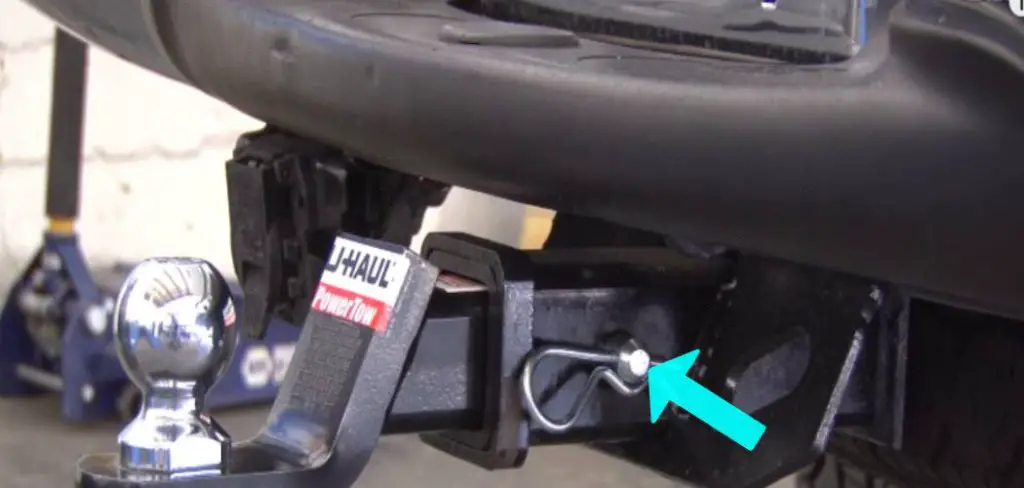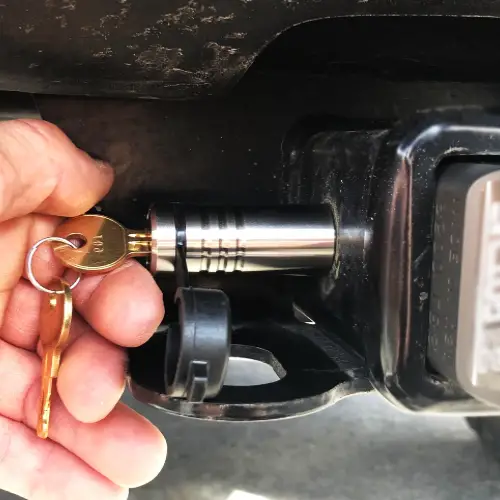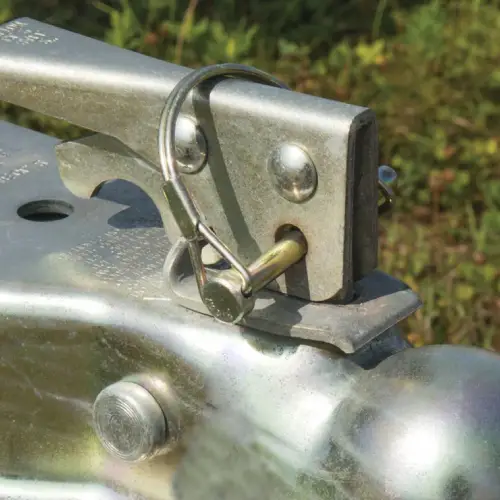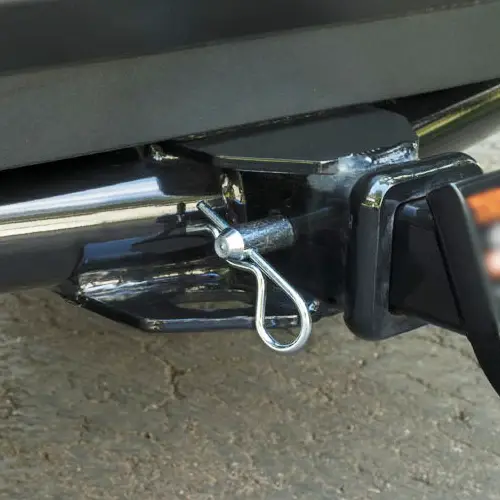A hitch pin is a small metal pin used to secure a hitch to a vehicle. While it may seem like a simple task, using a hitch pin correctly is essential to ensuring the safety of your vehicle and trailer. Follow this article to use a hitch pin properly.

Table of Contents
- Why Are Hitch Pins Used?
- What Type of Hitch Pin is Used for Vehicles Connecting a Trailer?
- How to Use a Hitch Pin?
- Tips for Troubleshooting Common Hitch Problems
- Conclusion
- FAQs
Why Are Hitch Pins Used?
A hitch pin is hardware that temporarily joins two pieces of metal together. They are commonly used inside the receiver hitch on trailers. These pins have a bent or head on one end that prevents it from coming out, and a clip is used to hold the other end in place. You can also get them in lock systems without a clip.
What Type of Hitch Pin is Used for Vehicles Connecting a Trailer?
There are many types of hitch pins available on the market. Many of these hitch pins have similar features, but they may be distinguished from one another by different names. The three most common hitch pin types are described below.
1. Receiver Lock Hitch Pin

It is a locking pin that goes through the trailer hitch receiver, and the receiver lock hitch pin has a locking head that fits into the receiver hole. The locking head has a pin that goes through it and is locked with a key. The receiver lock hitch pin is the best way to secure your trailer in your vehicle.
2. Safety Lock Hitch Pin

This hitch pin has a spring-loaded locking mechanism. The safety lock hitch pin is inserted into the trailer hitch receiver and locked in place with the locking mechanism. The safety lock hitch pin is not as secure as the receiver lock hitch pin, but it is still a good way to secure your trailer to your vehicle.
3. Trailer Hitch Pin With Clip

The trailer hitch pin is inserted into a hole and held in place by a curved bar or straight bar at one end and by a small hole in the head of the pin at the other end. An oblong 2-armed clip is also used to help secure the pin.
How to Use a Hitch Pin?
There are different types of hitch pins, which may affect their use differently. Some uses for hitch pins include:
Firstly, find the correct receiver lock hitch pin for your vehicle in all cases. The size is determined by the width of your vehicle’s receiver hitch. Check its load capacity and buy.
Use Receiver Lock Hitch Pin
- Thread the receiver lock hitch pin through the receiver hitch.
- Insert the key into the receiver lock and turn it clockwise to engage the locking mechanism.
- To remove the receiver lock hitch pin, insert the key and turn it counterclockwise.
Use Safety Lock Hitch Pin
- Pull the locking hitch pin through the receiver hitch until the cotter pin is exposed on the other side.
- Spread the legs of the cotter pin so it can fit through the hole in the locking hitch pin.
- Pull the cotter pin through the hole in the locking hitch pin.
- Insert the locking hitch pin into the receiver hitch.
- To remove the locking hitch pin, pull the cotter pin out of the hole in the locking hitch pin.
Use Trailer Hitch Pin With Clip
- To use a trailer hitch pin with a clip, first set the receiver hitch in the correct position behind your vehicle.
- Then, insert the trailer hitch pins through the holes on the receiver hitch’s side, ensuring the holes on the two components line up correctly.
- Finally, set the clip vertically into the hole in the head of the trailer hitch pin. If it is difficult to insert the clip there, you can pull the two sides of the clip slightly apart to create a small gap.
Tips for Troubleshooting Common Hitch Problems
Hole Deformity
If the receiver hitch pin holes are too big, the receiver hitch pins will be loose. This can cause the trailer to detach from the vehicle while in transit. To fix this problem, replace the receiver hitch pins with a larger size.
Clip Damage
If the trailer hitch pin clip is damaged, the trailer hitch pin may become loose and fall out. This can cause the trailer to detach from the vehicle while in transit. To fix this problem, replace the trailer hitch pin clip with a new one.
Pin Bend or Fragile
If the hitch pin is used for heavy work for a long time, it may become bent or fragile and cause a major accident. You need to check it regularly, especially after heavy use.
Stuck Tight
If the hitch pin is difficult to remove, it may be due to rust or dirt build-up. To fix this problem, clean the hitch pin & receiver with a wire brush or sandpaper.
Conclusion
If you tow a trailer, it is important to use a hitch pin to secure the hitch to your vehicle. There are different types of hitch pins available on the market, so be sure to choose the right one for your needs. Be sure to follow the proper steps for using a hitch pin, as described in this article, to ensure the safety of your vehicle and trailer.
FAQs
How Much Weight Can Pull With a Hitch?
The maximum weight that can be pulled with a trailer hitch is typically between 10,000 and 20,000 lbs. When deciding how much weight you can pull with your hitch, you must take into account the tongue weight of the trailer and the weight of the trailer itself.
Read also – How to Install Recessed D Rings on Trailer Floor.
